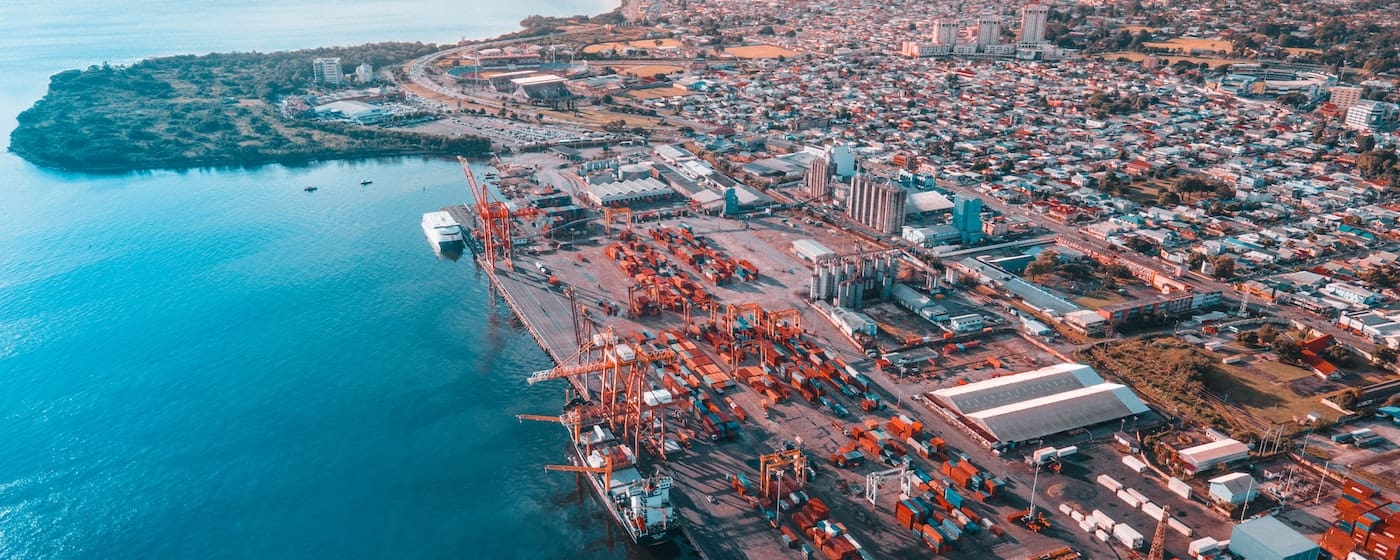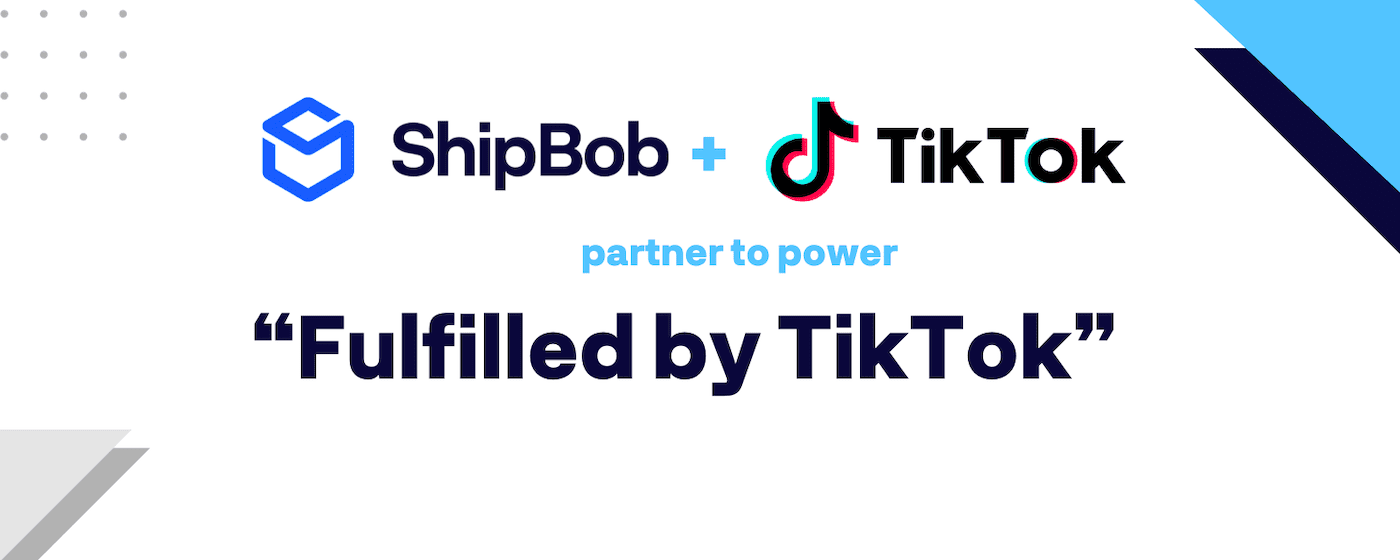Table of Contents
** Minutes
Customs clearance: How to plan ahead
The 4 steps of the customs clearance process
What if your shipment fails at customs
List of helpful custom clearance resources for the US
For many ecommerce businesses, selling to customers globally is a great opportunity. It opens the doors to new markets, and broadens your customer base.
However, one of the major challenges of shipping globally is navigating the world of customs clearance and international regulations. A simple oversight or lack of awareness can lead to shipment delays, added costs, and even confiscated goods.
The key to overcoming these obstacles lies in preparation, knowledge, and the right partnerships. In this article, we’ll discuss what you need to know about customs clearance and how you can simplify the process.
What is customs clearance?
Customs clearance refers to the official process whereby customs authorities inspect, approve, and release goods coming into (imports) or leaving (exports) a country.
This procedure ensures that shipments comply with local regulations, that the appropriate duties and taxes are paid, and the necessary documentation is properly filed.
Customs clearance is a crucial step in international trade, because it safeguards a nation’s economic, health, and security interests while facilitating the movement of goods across borders.
Customs clearance: How to plan ahead
If you want to minimize the risk of delays and additional fees at customs, then you’ll need to be prepared.
Here are a few considerations for brands getting ready to ship internationally.
International shipping documents you’ll need
International shipping involves a lot of paperwork.
There are several shipping documents that you need to be aware of – and although you may not need to fill out all of them, knowing their purpose can make your international shipping experience much easier.
- Proforma invoice: A preliminary bill of sale sent to buyers in advance of a shipment or delivery, detailing the items and their costs.
- Commercial invoice: An official document between the supplier and the buyer that details the sold goods, their quantity, and the price, serving as a record of the transaction and used for customs valuation.
- Export packing list: A detailed list specifying the items in a shipment, their physical characteristics, and packaging details.
- Certificates of origin: Official documents that certify the country in which goods were manufactured, which is used to determine tariffs and trade eligibility.
- Certificate of free sale: A document indicating that goods, particularly in the food and health sectors, are legally sold and used in the country of origin and can be exported.
- Shipper’s letter of instruction: Instructions provided by the shipper to the freight forwarder, detailing how the shipment should be managed, dispatched, and routed.
- Inland bill of lading: A contract between the goods owner and the transporter for the overland transport of goods, often used when transporting goods to a main shipping port.
- Ocean bill of lading: A contract between the buyer and seller for the shipment of goods across international waters.
- Air waybill: A receipt issued by an international airline for goods, serving as proof of the contract of carriage.
- Letter of credit: A bank-issued document that guarantees a buyer’s payment to a seller, ensuring the seller receives payment as long as specified delivery conditions are met.
More detail on each of these documents can be found here.
Understand international shipping regulations
The various intricacies of each country’s shipping regulations can be very confusing. Everything from product restrictions and taxation, to packaging standards and non-compliance can change at a moment’s notice.
That’s why it’s crucial to stay updated with the latest international shipping regulations, so your cross-border transactions are as smooth as possible.
Large shipping companies like FedEx often post updates regarding any major changes retailers need to be aware of when shipping internationally. You can also use an import/export regulations tool like the one UPS offers. With this tool, you simply select the origin country, destination country, and documentation options. The tool will then provide you with detailed information regarding what is required for each document based on the destination country’s regulations.
Source: UPS
How duties and taxes can impact your shipment
Internet sales taxes aren’t just a local affair. When you go global, so do your tax responsibilities.
Imposed by the receiving country’s government, these charges can be based on the shipment’s value, type, and origin. GST (Goods and Services Tax) and other VATs (Value-Added Taxes) serve not only as a revenue source for governments, but also as tools to control the flow of specific goods into a country.
Some countries have luxury taxes, sin taxes, or other specific import duties. For ecommerce businesses, knowing these duties and tax implications ahead of time can minimize the risk of surprise charges when your shipment reaches the destination country’s customs office.
If the proper fees aren’t paid ahead of time, shipments may be delayed. This can cause frustrations for the merchant as well as their customers.
“I’m a strong believer in having local inventory in the country that we ship to. I don’t like to do cross-border shipments, just because there’s so much potential for delays and customer issues.
So for us, it’s very important that the fulfillment company that we work with has the capability to grow with us and provide service in the countries in which we want to sell our products – and I see that with ShipBob.
Their goal is to continue building their global network so that their customers have as many global selling options as possible, so I definitely see that working for us in the long term. And ShipBob’s current footprint is very aligned with our top ecommerce markets and target audience.”
Mithu Kuna, Co-Founder and CEO of Baby Doppler
The 4 steps of the customs clearance process
Whether you’re a budding ecommerce entrepreneur or a seasoned exporter, understanding the four steps of the customs clearance process is a must if you want to ensure smooth international trade.
1. Shipping label, invoices, and other paperwork is checked by customs
Every international shipment requires specific paperwork to verify the contents, origin, and destination of the shipment. This paperwork includes the shipping label, invoices, packing lists, and more.
Best practices:
- Ensure the paperwork is complete and accurate to avoid delays.
- Be clear and transparent about the products’ descriptions and their value.
- Make sure to provide accurate contact information for both the sender and the recipient.
2. Taxes and duties are determined, requested, and paid
Taxes and duties protect domestic industries and generate revenue for governments. Duties are a tariff that varies based on the type of product, as well as its value and origin. Some goods are even exempt from paying customs duties thanks to Section 321.
Additionally, various fees (such as processing or inspection fees) cover the costs of customs procedures and ensure imported products meet local standards.
Best practices:
- Familiarize yourself with the tax and duty regulations for your specific product in the destination country.
- Use DDP (Delivered Duty Paid) shipping when feasible to simplify the process for the receiver.
- Stay updated on global shipping trends and policies which can affect tax and duty rates.
3. Package(s) is cleared
Once taxes and duties are settled, and all documentation is verified, the package is cleared by customs. This means it’s free to move on to its final destination.
The package is then handed over to the local or destination country’s postal service. It is now on its final leg of the journey, ready to be delivered to the recipient.
Difficulties of clearing customs for ecommerce businesses
Despite a merchant’s best efforts, customs hurdles are bound to pop up eventually. A few common ones include:
- Documentation errors: A minor oversight can cause major delays.
- Product restrictions: Some products might be restricted or need special permissions.
- Volume surges: Holidays or events can cause a backlog at customs.
For businesses, especially smaller ones without dedicated logistics teams, these challenges can be overwhelming. Partnering with a third-party logistics (3PL) provider can help alleviate these issues, and help businesses remain compliant, reduce shipping delays, and provide a better experience for their customers.
What if your shipment fails at customs
If your shipment faces a hold-up at customs, it’s important not to panic.
The most common reasons for such delays include discrepancies in documentation, prohibited or restricted items, or even routine random inspections. Always pay close attention to any notices or communications from customs agents to understand the root of the hold.
Address any highlighted issues swiftly, whether that means rectifying documentation, settling any outstanding duties, or considering consultation with a customs broker for expert guidance. A proactive approach and preparation can help minimize such setbacks in the future.
List of helpful custom clearance resources for the US
When dealing with customs clearance in the U.S., being informed is your best bet. Luckily, there are several government agency resources at your disposal:
- Ports of entry: The U.S. has multiple ports of entry, each with its own specific guidelines. Familiarize yourself with the port your goods are entering through, be it air, sea, or land.
- Harmonized tariff schedule (HTS): This is a comprehensive resource that details duty rates for virtually every item that exists. Knowing the HTS code for your product is essential for accurate documentation.
- Quota enforcement and administration: For some products, the U.S. has quotas or limits on the amount that can be imported. This division of CBP provides clarity on those restrictions.
- Automated commercial environment (ACE): This is the U.S. trade processing system. It’s a single platform through which businesses can report imports and exports and the government can determine admissibility.
- Customs rulings online search system (CROSS): This platform maintains a database of past rulings, which can provide insights into how specific items were handled in customs clearance.
How can ShipBob help make the clearance process easier
Navigating the customs clearance process can be daunting. Imagine you make your first bulk order, ship it internationally, pay several fees – and once it finally reaches customs, you’re informed there’s a documentation error and your shipment will be delayed.
That’s why leveraging the expertise of a global fulfillment platform like ShipBob can be invaluable for your ecommerce brand.
ShipBob simplifies the customs process and handles all the paperwork for you, ensuring that your documentation is accurate and compliant. From correctly classifying products with the right Harmonized System (HS) codes to providing insights on potential duties and taxes, ShipBob is there every step of the way, ensuring a smooth customs process for your shipments.
ShipBob’s knowledge of international fulfillment regulations and best practices, combined with its expansive network of global warehouses, means that your goods are positioned optimally for efficient clearance.
By storing inventory and fulfilling orders from ShipBob’s fulfillment centers in the UK, Australia, Canada, and Europe, you can sidestep cross-border complexities while simultaneously reducing shipping costs and times.
“Canada is our biggest market outside of the US. We were shipping from our Chicago area warehouse to Canada for a long time. We were missing out on revenue by taking on import fees and taxes. We wanted to outsource fulfillment there to reclaim some of that.
We also wanted to help improve customer satisfaction by speeding up their order delivery time and avoiding those frustrating customs hold-ups. Being in ShipBob’s Canadian fulfillment center has been great for us.”
Adam LaGesse, Global Warehousing Director at Spikeball
You can even offer customers DDP shipping through ShipBob DDP, our DDP solution to prevent surprise fees for customers, and deliver an exemplary international shipping experience.
“We tried using DDU shipping to Canada and realized what a pain it was from a customer experience and customer service standpoint. DDP shipping was a perfect solution. Now, we can test all global markets and customers will receive their orders in a timely manner with no hidden fees.
Our favorite aspect of ShipBob’s DDP shipping solution is being able to ship our products around the world to those who really need them. We’d love to open up fulfillment centers in every country, but it is quite tough to expand everywhere. DDP shipping allows us to serve everyone immediately!”
Paul Jackson, Co-Founder of Animalhouse Fitness
To learn more about ShipBob’s international shipping capabilities, click the button below to connect with a fulfillment expert.
Customs clearance FAQs
Below are answers to some of the most common questions about customs clearance.
How long does customs clearance take?
The customs clearance process can take under 24 hours depending on the country, product type, and customs workload. However, if a shipment is flagged or if customs processing is backed up, it may take several days.
How do I know when my package has been cleared by customs?
You’ll typically receive a notification from your shipping provider or 3PL partner.
Who is responsible for customs clearance?
The shipper holds the primary responsibility for ensuring customs clearance. However, this task can be delegated to experts like ShipBob.
What is the best way to avoid customs fees?
Customs fees are not avoidable. A thorough understanding of the customs process, double- or even triple- checking to ensure documentation is accurate, and working with a reputable fulfillment and shipping partner are all good ways to minimize delays and streamline the customs process.
Do I need a customs broker?
There is no legal requirement to hire a customs brokerage. However, for complex shipments or certain countries, a customs broker is good to have if you’re handling international shipments alone. They bring expertise that ensures smoother clearance.



